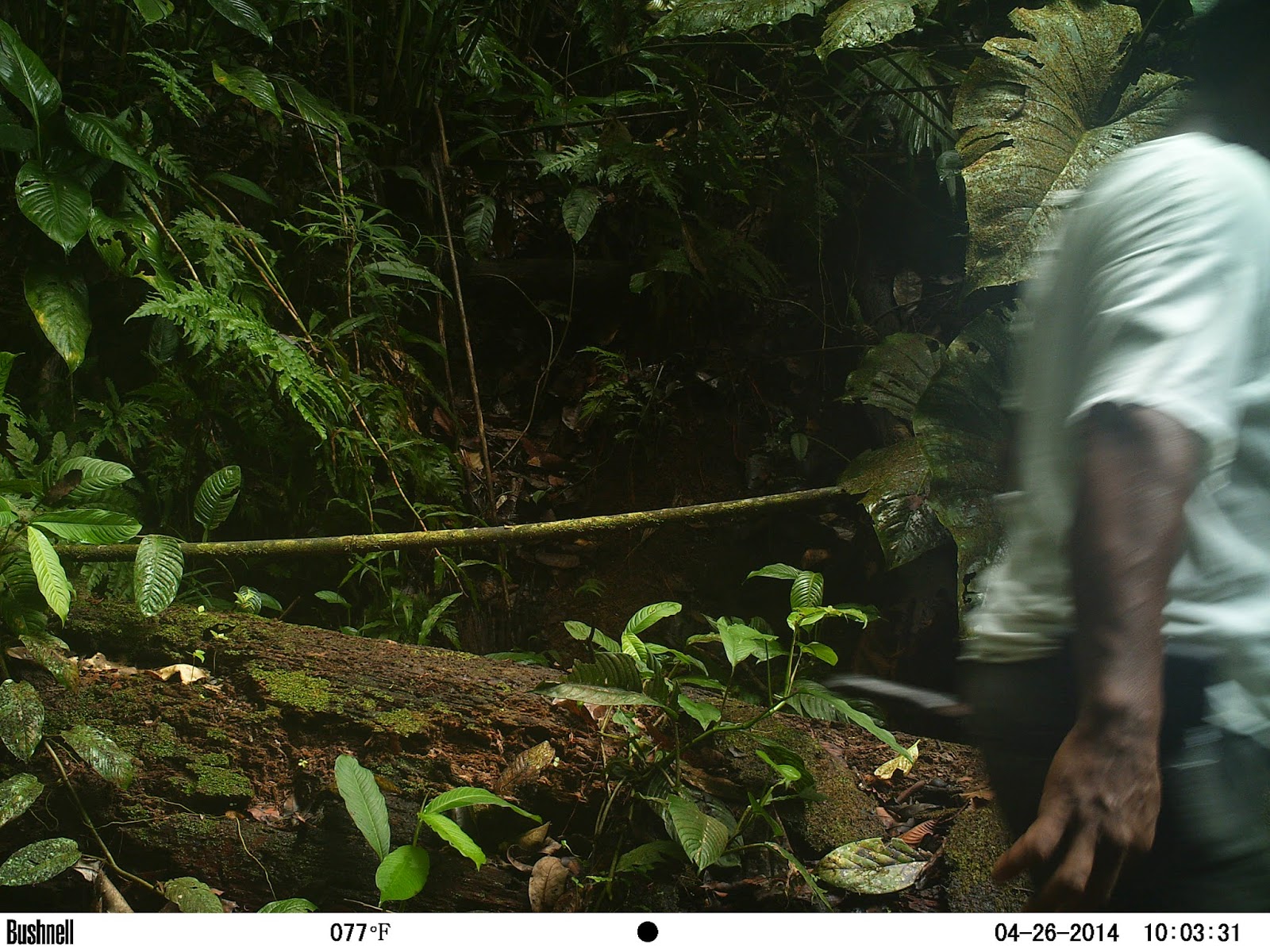 | |
| Striped Hog-Nosed Skunk seems to be a common resident. |
Our trip in July left us with over 20,000 images and videos that needed to be sorted through categorized and cataloged. Now that we are finished, we'll give you the highlights. (MAXIMIZE videos in lower right of screen)
Opossums were not the only ones who had young during the January-June period. The below image came through one of the wireless cameras.
Well this could be a number of animals:Tayra. Coati or a Jaguarundi. These cameras take two pictures seconds apart per trigger. Here is what the companion picture recorded two seconds earlier:
That is a Jaguarundi and her kitten. These are the first images of young jaguarundi that the cameras have recorded.
We got several other Jaguarundi images as well.
We even had a jaguarundi image sent by the wireless camera just last week:
The Coatis also were with young. In this video, you can see the clan of females and juveniles. Adult male Coatis are solo.
While we saw no evidence of offspring, you have to wonder how this trio of Tayras paired off on Valentine's day.
To further the Tayra mystery, we suspect this ritual is related to scent marking, but it was pretty funny to see how it all went down.
The day before we left to head back to the States, I made one more quick run through the jungle to double check the cameras' settings/batteries/aim. We captured this image of a Tayra at the famous rock:
We saw several ocelots that we could not recognize including this big guy:
and...this little guy:
We have no idea if any of the ocelots are related, but we suspect that they are.
Finally, we get to the monkeys. The Capuchins were very active on nearly all cameras. One camera in particular caught something quite interesting. It shows capuchins actually feeding with coatis. The unusual thing is that adult capuchins will capture and eat young coatis, but this clan and troop seem to get along really well.
Remember that you can follow the wireless cameras on your iPhone with the INSTANT WILD APP from the Apple App Store...it is free!
See you next time!
Remember to visit OCHO VERDE YOUTUBE PAGE for more videos and
If you would like to support our project to help with expensive lithium batteries, camera upgrades, data plans, etc, please use the secure PAYPAL button below. Thank You!













































